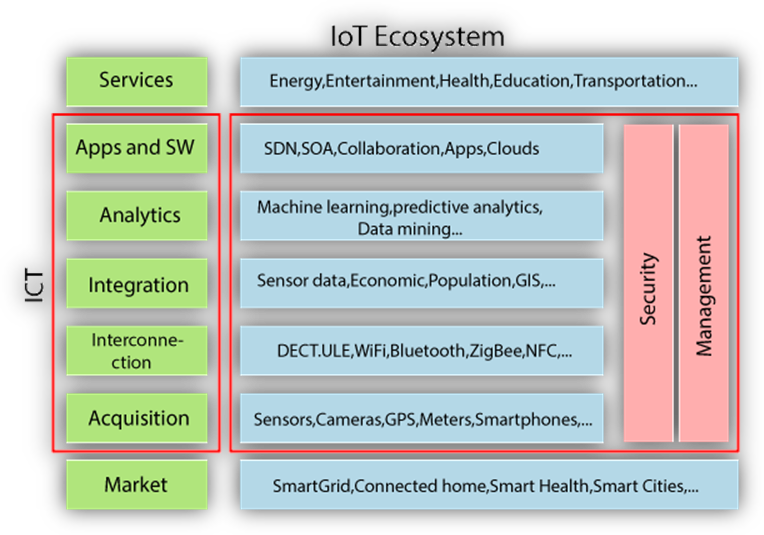IoT Ecosystem
The following figure shows the seven-layer model of the IoT Ecosystem.

- The first layer represents the market or application domain that includes smart grid, connected home, smart health, or smart cities, etc.
- The second layer consists of sensors that allow the application to perform action. Examples of such sensors are temperature sensors, humidity sensors, electric meters, or cameras.
- The third layer is an interconnection layer that allows the data generated by the sensors to be communicated, usually to a computer facility, data centre, or cloud.
- The fourth layer is the integration layer. Data is aggregated with other known data sets, such as geographic data, population data, or economic data.
- The Fifth layer is an analytics layer that combines data, analysed using machine learning and data mining techniques.
- The sixth layer is the application and software layer. To enable the implementation of such distributed applications, we also need the latest application-level software for collaboration and communication, such as software-defined network (SDN), service-oriented architecture (SOA), etc.
- The seventh layer includes services. It may include energy management, health management, education, transportation, etc.
In addition to these seven overlapping layers, security and administration applications are required for each layer and, therefore, are shown on the side.